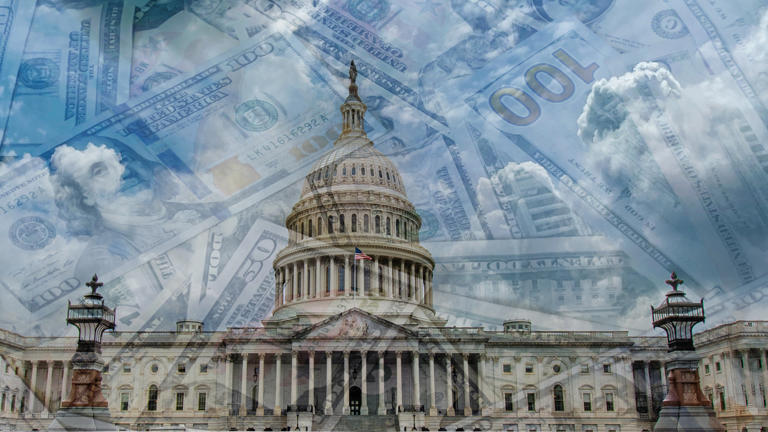The United States government’s debt has reached an unprecedented level, surpassing $34.5 trillion. However, the concept of owing money is not new to the country’s history; in fact, the U.S. has been in debt since its inception. During the American Revolutionary War, the government borrowed $75 million from both domestic investors and the French government to finance its military efforts. This early debt was a necessary means to secure the nation’s independence and establish its place on the global stage.
Les Rubin, founder of Main Street Economics, attributes the staggering debt to irresponsible fiscal policies implemented by the government. He highlights that in recent years, the government has consistently spent more than it has generated in revenue, resulting in annual deficits exceeding $2 trillion since 2001. This pattern of deficit spending has contributed significantly to the accumulation of the national debt over time. Despite occasional efforts to address the issue, such as budget cuts or tax reforms, the underlying structural challenges persist, exacerbating the debt burden.
Rubin further explains that the national debt is owed to a variety of entities, including foreign countries, the Federal Reserve, government agencies like Social Security and Medicare, as well as private investors. This diverse base of creditors underscores the complex nature of the debt and its implications for both domestic and international financial markets. The reliance on external financing sources exposes the U.S. economy to risks associated with changes in global economic conditions and investor sentiment.
Eric Mangold, founder of Argosy Wealth Management LLC, underscores a key difference between personal spending and government spending: the government has the unique ability to print more money to cover its debts. While individual citizens cannot simply request additional money from a mint, the government can do so through the Federal Reserve’s monetary policy tools. However, this flexibility comes with its own set of challenges, particularly in managing inflationary pressures and maintaining confidence in the currency.
Despite the government’s ability to manage its debt through monetary policy, excessive debt accumulation can have long-term consequences for the economy and society. Mangold emphasizes that continuous deficit spending and debt accumulation can lead to higher inflation, reduced purchasing power, and increased borrowing costs for future generations. Moreover, the burden of servicing the debt falls disproportionately on taxpayers, who may face higher taxes or reduced government services to cover interest payments and principal repayments.
The consequences of a potential default by the U.S. government on its loans would be dire. Rubin warns of catastrophic outcomes, including a dramatic decline in the value of U.S. bonds, possible bankruptcy for entities holding substantial U.S. assets, and a collapse of the world economy and monetary system. Such a default would result in the government being unable to borrow more money, leading to funding shortages for essential operations and services. This scenario underscores the critical importance of addressing the root causes of the debt problem and implementing sustainable fiscal policies to mitigate systemic risks.
The escalating national debt also has significant implications for individual Americans. As Rubin explains, increasing debt and rising interest rates can make borrowing more expensive, affecting everything from mortgage rates to credit card interest. This can exacerbate financial challenges for individuals, making homeownership unattainable for some and contributing to a cycle of debt accumulation. Moreover, the uncertainty surrounding future tax policies and government spending priorities can undermine consumer confidence and investment decisions, further dampening economic growth and prosperity.
Despite the government’s ability to borrow or print money to cover its debts, Rubin likens the U.S. debt to a Ponzi scheme, highlighting the inherent risk of relying on continuous borrowing to service existing debt. He warns that if investors lose confidence in U.S. bonds and stop purchasing them, it could trigger an economic catastrophe. This scenario underscores the need for policymakers to address the underlying structural imbalances in the economy and restore fiscal sustainability to ensure the long-term prosperity and stability of the nation.
In summary, while the government has mechanisms to manage its debt in the short term, the long-term implications of unsustainable borrowing practices and escalating debt levels pose significant risks to both the economy and individual citizens. Addressing these challenges requires a comprehensive approach that includes fiscal discipline, economic reforms, and prudent policymaking to restore confidence in the nation’s financial future.
